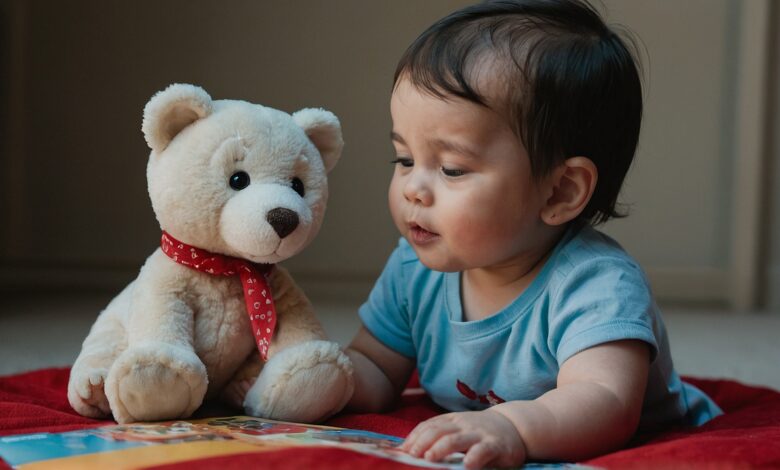The Ultimate Beanie Babies Price Guide: Unlocking the Value of Your Beloved Collectibles
Ultimate Guide: How Much Are Beanie Babie Price Guide

Introduction to
Beanie Babie Price Guide
What are Beanie Babies?
Beanie Babies are a line of stuffed animals filled with plastic pellets (or “beans”) that were first introduced to the world in the early 1990s. Created by Ty Warner, these cuddly toys quickly captured the hearts of collectors and enthusiasts around the globe with their unique designs and endearing personalities.
Brief history of Beanie Babies
The history of Beanie Babies dates back to 1993 when Ty Warner founded Ty Inc. and released the first nine Beanie Babies, which included iconic characters such as “Legs the Frog” and “Squealer the Pig.” These plush toys gained popularity among children and adults alike, sparking a collectibles craze that would sweep the world in the coming years.
The Beanie Babies Craze of the 1990s
The rise of Beanie Babies as a global phenomenon
During the mid-1990s, Beanie Babies became nothing short of a cultural phenomenon. People from all walks of life eagerly sought after the latest additions to their Beanie Babies collections, driving up demand to unprecedented levels. This craze extended beyond national borders, with collectors emerging from countries far and wide, making Beanie Babies a truly global sensation.
Factors contributing to their immense popularity
The popularity of Beanie Babies can be attributed to several key factors. First, their adorable designs and a wide variety of animal characters appealed to people’s innate love for cute and cuddly objects. Additionally, Ty Warner’s approach to marketing Beanie Babies created a sense of scarcity and exclusivity. By retiring certain designs and limiting production quantities, Ty Inc. heightened the collectible nature of these toys, arousing a sense of urgency among collectors.
Understanding Beanie Babies’ Value
Factors influencing Beanie Babies’ worth
Determining the value of a Beanie Baby involves considering various factors that can significantly impact its worth.
- Rarity: The scarcer a Beanie Baby is, the more valuable it tends to be in the market. Limited editions, discontinued designs, and variations in color or material can all contribute to rarity.
- Condition: The condition of a Beanie Baby is another crucial aspect influencing its value. Well-preserved toys, with minimal wear and tear, command higher prices compared to those showing signs of damage or fading.
- Originality: Beanie Babies with their original tags intact often hold a higher value. Tags provide essential information about the toy and its authenticity.
- Age: Generally, older Beanie Babies tend to have higher value, especially if they are from the early years of production.
- Special Editions: Certain Beanie Babies, such as those released to commemorate special events or charities, can be highly sought after, further increasing their value.
Appraising the value of your Beanie Babies
To determine the value of your Beanie Babies, there are several avenues you can explore:
- Researching online marketplaces: Websites and platforms dedicated to buying and selling collectibles can provide insight into current market prices.
- Consulting price guides and collectors’ resources: Books, magazines, and online databases that specialize in Beanie Babies can offer valuable information on the value of specific toys.
- Seeking professional appraisals: If you have a particularly rare or valuable Beanie Baby, it may be worth consulting with a professional appraiser who specializes in collectible toys. Their expertise can provide an accurate assessment of your toy’s value.
Identifying Valuable Beanie Babies
Rare Beanie Babies to look out for
- Early prototypes and editions: Beanie Babies that were part of the initial release, known as the “Original Nine,” hold significant value due to their historic importance and limited availability.
- Limited editions and retired designs: Beanie Babies that were produced in limited quantities or discontinued altogether often become highly valuable due to their scarcity in the market.
- Errors in manufacturing or labeling: Occasionally, Beanie Babies are released with mistakes in their design, such as misspelled tags or incorrect patterns. These errors can make them extremely valuable to collectors.
- Unique tags and markings: Beanie Babies with unusual tags or markings, such as special edition holographic or misprinted tags, are highly coveted by collectors.
Recognizing authentic Beanie Babies
To ensure you have genuine Beanie Babies in your collection, watch out for the following:
- Manufacturer tags and labels: Authentic Beanie Babies should have tags with the Ty logo, the toy’s name, and information about the company. Counterfeit toys may have misspelled or blurry tags.
- Correct materials and craftsmanship: Beanie Babies should be made with high-quality materials and display excellent craftsmanship. Poor stitching, cheap fabric, or visible flaws are signs of potential counterfeits.
- Verifying authentic collectibles through trusted sources: Cross-referencing information with trusted Beanie Babies resources, such as Ty Inc.’s official website or reputable collectors’ forums, can help confirm the legitimacy of your toys.
Caring for Your Beanie Babies Collection
Proper storage and display techniques
To protect your Beanie Babies and preserve their value, consider the following storage and display tips:
- Keep them away from direct sunlight and excessive heat, as it can cause colors to fade and fabric to deteriorate over time.
- Use acid-free archival boxes or display cases to prevent dust accumulation and potential damage.
- Store them in a clean, dry area, away from moisture or humidity.
Preventing damage and preserving value
To prevent damage to your Beanie Babies and maintain their value:
- Avoid exposing them to extreme temperature changes that could affect their fabric and stuffing.
- Handle them with clean, dry hands to prevent the transfer of oils, dirt, or other substances that could stain or damage the toys.
- Keep them away from pets or small children who may unintentionally cause harm.
Cleaning and maintaining Beanie Babies
Should your Beanie Babies require cleaning, follow these steps:
- Utilize a gentle brush or cloth to softly eliminate surface dust and debris.
- Avoid using chemicals, detergents, or water-based cleaners, as they may damage the fabric or stuffing. Dry cleaning is not recommended for these collectibles.
- If necessary, consult a professional toy restorer or conservator for expert guidance on cleaning and preserving your Beanie Babies.
Beanie Babie Price Guide Investment: Is It Worth It?
The potential return on investment
Beanie Babies has the potential to be an investment, but it requires careful consideration and research. Some rare and highly sought-after Beanie Babies have increased significantly in value over the years, providing substantial returns for collectors who acquired them at lower prices. However, it is essential to note that the collectibles market can be unpredictable, and not all Beanie Babies will appreciate it.
Risks and challenges in Beanie Babies collecting
Collecting Beanie Babies comes with its share of risks and challenges, including:
- Market fluctuations: The value of Beanie Babies can fluctuate over time due to changing trends, demand, and supply. It is crucial to stay informed about market conditions before making any investment decisions.
- Counterfeits and fakes: The Beanie Babies market has been plagued by counterfeit toys. To protect your investment, always verify the authenticity of your Beanie Babies before purchasing or selling.
Popular Beanie Babies and Their Values
Spotting high-value Beanie Babies across different series
- Original Nine Beanie Babies: These include iconic toys like “Patti the Platypus” and “Cubbie the Bear.” Depending on their condition and rarity, they can fetch substantial prices in the market.
- Princess Diana Beanie Baby: Released in honor of Princess Diana, this highly sought-after collectible can command considerable value, especially if in pristine condition with an intact tag.
- Billionaire Bears: These limited-edition Beanie Babies were created to commemorate successful entrepreneurs and businesspeople. The rarest versions of these bears can reach astonishing prices in the collectors’ market.
- Zodiac Beanie Babies: Beanie Babies representing the twelve signs of the zodiac have gained popularity among collectors. Certain rare zodiac designs can be highly valuable.
- Blue Beanies and other rare colors: Beanie Babies released in limited-edition colors, such as royal blue, can hold significant allure for collectors. Other unique color variations also contribute to the value of these toys.
Current market trends and fluctuations
The market for Beanie Babies continues to evolve, with trends and values fluctuating based on collectors’ interests and demand. Staying informed about current market trends, following reputable collectors’ forums, and consulting price guides can provide valuable insights into the worth of specific Beanie Babies.
Selling Your Beanie Babies
Choosing the right selling platform
When selling your Beanie Babies, consider these platforms:
- Online marketplaces: Platforms like eBay, Etsy, and Amazon offer access to a broad customer base, increasing the chances of finding interested buyers.
- Collectors’ conventions and fairs: Participating in local or regional collectibles events can connect you with passionate collectors who may be willing to pay a premium for rare Beanie Babies.
Setting a fair price
To set a fair price for your Beanie Babies:
- Research recent sales of similar toys to gauge their market value.
- Take into account the condition, rarity, and demand for the particular Beanie Baby you are selling.
- Consider consulting with professional appraisers or experienced collectors for guidance on pricing.
Tips for successful selling
In order to enhance the likelihood of a successful sale:
- Properly photographing your Beanie Babies:
- Use natural light or a well-lit area to capture clear, detailed images.
- Showcase any special tags, markings, or unique features.
- Writing captivating and accurate descriptions:
- Include key details such as the toy’s name, condition, rarity, and any special editions or variations.
- Highlight the Beanie Baby’s history or background to engage potential buyers.
- Packaging and shipping:
- Use appropriate materials to ensure safe transit, such as bubble wrap or padded envelopes.
- Clearly label and address packages to minimize the risk of damage or loss during shipping.
Avoiding Beanie Babie Price Guide Scams
Common scams in the Beanie Babies market
Be aware of the following scams that can occur in the Beanie Babies market:
- Fake or counterfeit Beanie Babies are being sold as authentic collectibles.
- Misleading listings or exaggerated valuations that entice buyers into paying more than an item is worth.
- Fraudulent sellers who disappear after receiving payment, without delivering the purchased Beanie Babies.
Red flags to watch out for
To steer clear of scams, be vigilant for these warning signs:
- Unusually low prices that seem too good to be true, as they could indicate counterfeits or potentially defective Beanie Babies.
- The lack of clear and detailed images or information from the seller makes it hard to assess the authenticity of the toy.
- Sellers who pressure buyers to make hasty decisions or demand immediate payment without providing secure transaction methods.
Frequently Asked Questions (FAQs) Beanie Babie Price Guide

Can I sell Beanie Babies without tags?
Yes, you can still sell Beanie Babies without tags. However, keep in mind that Beanie Babies with their original tags intact tend to command higher prices due to their authenticity and collectible appeal.
Are all retired Beanie Babies valuable?
Not all retired Beanie Babies are valuable. The value of a retired Beanie Baby depends on several factors, including scarcity, demand, and the specific design or series it belongs to. Researching the market and consulting price guides can help determine the potential value of a retired Beanie Baby.
What are some lesser-known valuable Beanie Babies?
While the Original Nine and high-profile Beanie Babies often steal the spotlight, there are numerous lesser-known valuable Beanie Babies worth considering. Examples include “Curly the Bear,” “Valentino the Bear,” and “Erin the Bear.” Researching collector communities and utilizing price guides can help uncover hidden gems.
How can I store my Beanie Babies to prevent damage?
To store your Beanie Babies safely:
- Use acid-free archival boxes or display cases to protect them from dust and potential damage.
- Ensure the storage area is clean, dry, and free from excessive heat or humidity.
Can I clean Beanie Babies without reducing their value?
Yes, you can clean Beanie Babies without reducing their value if you take proper precautions. Employ a gentle brush or cloth to softly eliminate dust and surface debris. Avoid using chemicals, detergents, or water-based cleaners, as they can damage the fabric or stuffing.
What should I do if I suspect a Beanie Baby is counterfeit?
If you suspect a Beanie Baby is counterfeit, cease any transaction or purchase immediately. Consult reputable Beanie Babies resources, such as Ty Inc.’s official website or collectors’ forums, to verify the toy’s authenticity. If possible, compare the suspected counterfeit with a known authentic version to identify any differences.
Is the Beanie Babies market still active today?
Although the Beanie Babies craze has subsided since its peak in the 1990s, the Beanie Babies market is still active today. Collectors continue to buy, sell, and trade these beloved toys. The market has evolved, and values have fluctuated over time, making it important to stay informed about current trends and demand.Beanie Babie Price Guide
Conclusion Beanie Babie Price Guide
The enduring appeal of Beanie Babies lies in their nostalgic charm, unique designs, and the joy they bring to collectors of all ages. Understanding the factors that influence their value, recognizing valuable Beanie Babies, and caring for your collection can help unlock the full potential of your beloved collectibles. By navigating the Beanie Babies market with knowledge and diligence, you can experience the excitement of preserving and potentially profiting from these cherished toys.





